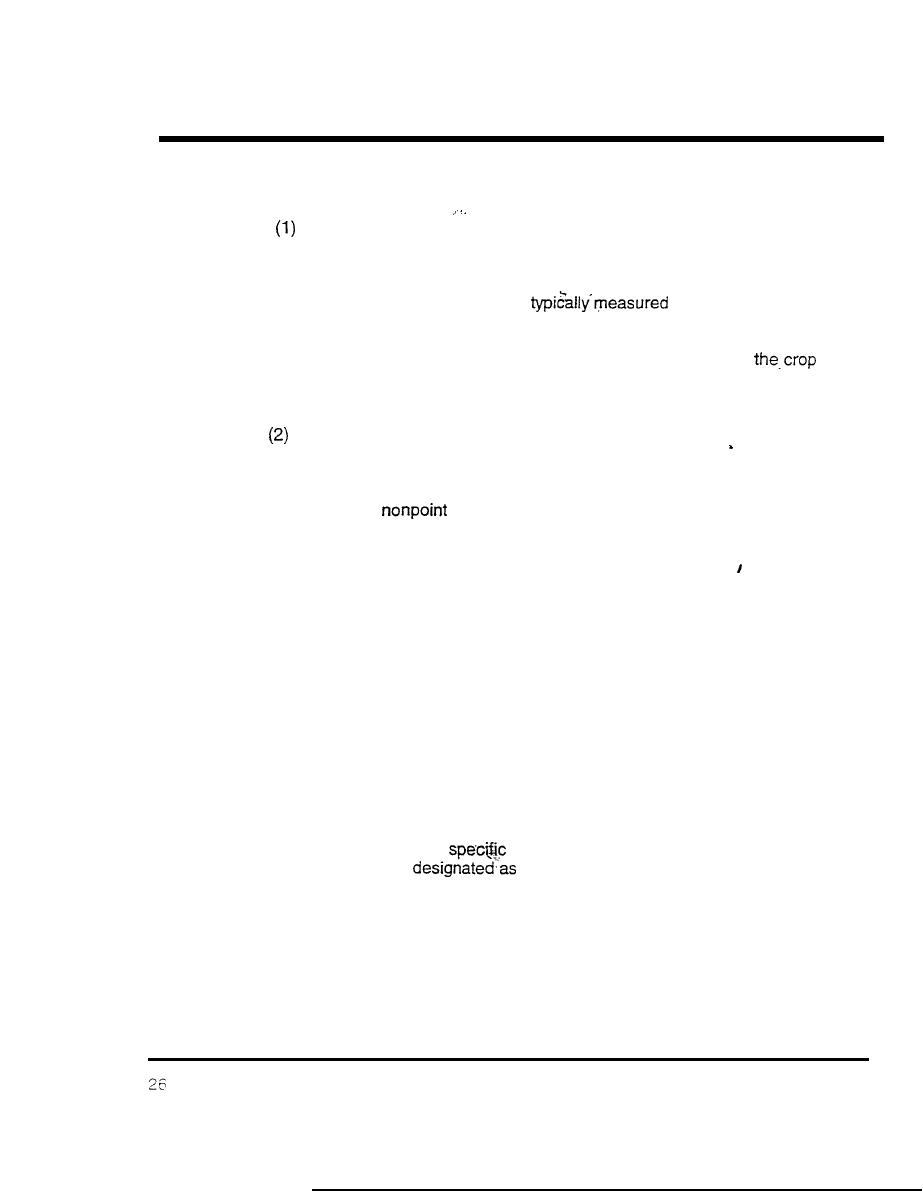
2. Development of BMP Cost-Effectiveness Values
potential for water quality degradation. Casman (1990) gives the following
examples:
A storage structure may promote proper or improper timing of fertilizer
application, depending on its capacity, and this, of course, will affect
nutrient losses.
by the number of days the
Manure storage capacity is
herd's manure can be stored before the structure is filled. For instance, a
structure with 90 days' capacity is filled and must be emptied four times a
year. Depending on the fields available to the farmer and
rotations, up to 3 of these 4 loads'of manure could be wasted (not applied
to the fields on which the major summer crops are grown).
The presence of a properly sized storagestructure does not guarantee
water quality protection.
Structures which retain solids from runoff and release liquids essentially
change
sources into point sources. Also structures which are
not emptied on schedule could force the farmer into spreading manure
during times when the fields are likely to produce excessive runoff
Since the benefit of a dry stack structure is realized primarily when used in
conjunction with a proper land application program, we will not attempt to
evaluate the cost-effectiveness of the structures by themselves. Rather, we have
included the costs of dry stack structures within the analysis of cost-effectiveness
of land application (Section 2.3.1.2).
2.3.2
Water Control Structures
When properly designed and managed, the practice of water table management
has been shown to be an effective tool for improving drainage water quality in
North Carolina's eastern coastal plain (Deal et al., 1986; Evans et al., 1988;
Gilliam et al. 1978). One
water table management practice, controlled
a BMP for soils with improved drainage. Using
drainage, has been
controlled drainage, water control structures called flashboard risers are installed
in drainage canals. Weirs can be placed in the riser to control the elevation of
water in the canal. During the growing season, water in the canal is maintained
at high levels to reduce the threat of drought stress. The water in the canals is
released for planting and harvesting (Chesheir et al., 1990). Several field studies
(Gilliam et al., 1978; Doty et al., 1982; and Evans et al., 1989) have shown that,
under proper management, controlled drainage is highly effective in reducing
pollutant outflow from agricultural fields.



 Previous Page
Previous Page
